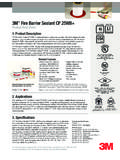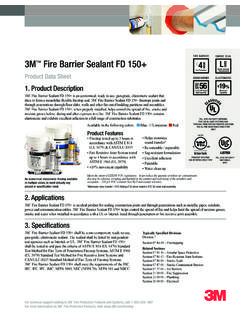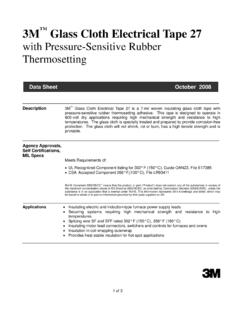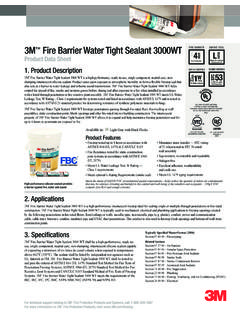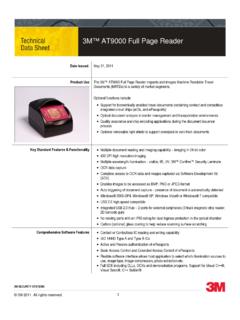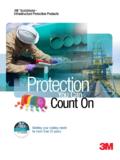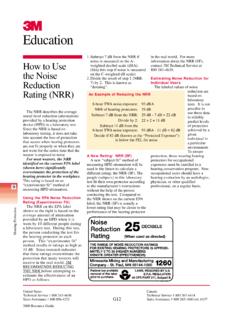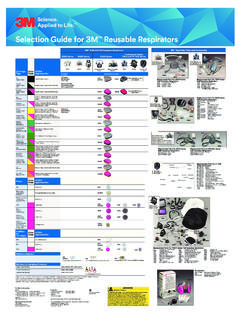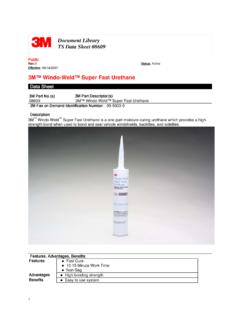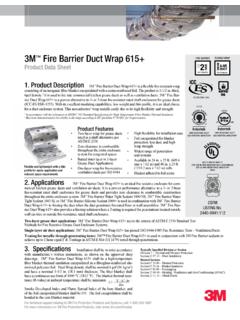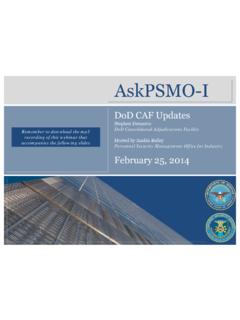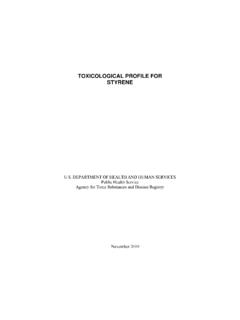Transcription of Questions and Answers on Molds and Mold …
1 3M June 2001 - 1 - Questions and Answers on Molds and mold Remediation 3M Occupational Health and Environmental Safety frequently asked Questions and Answers on Molds , health hazards associated with Molds and proper use of respirators during mold remediation. Why should I be concerned about being exposed to mold ? mold is a type of fungus that can grow and live in organic matter including many building materials, especially when elevated moisture levels are present. Some Molds release spores that are small enough to remain airborne.
2 Fungi can also release low levels of volatile organic compounds (VOCs) that are thought to be the source of odors associated with mold and mildew. Molds are known to cause a variety of health effects if spores are inhaled into lungs, swallowed, or if they get into the eyes, nose or open cuts. These health effects may include allergenic affects, asthma, runny nose, eye infection, dizziness, fatigue, nausea, irritation of the eyes, skin, nose, throat and lungs, as well as infection of immune-compromised or immune-suppressed individuals.
3 It is recommended that all persons with asthma, hypersensitivity pneumonitis, severe allergies, immune suppression, or other chronic inflammatory lung diseases be removed from the mold -contaminated area until remediation is complete. Where is mold found? mold is found everywhere. It is a natural part of our environment. However, when it becomes concentrated indoors it can cause health effects and damage building materials. mold growth can become a problem in humid or water damaged areas, such as: Flooded buildings Buildings with high moisture buildup, for example: HVAC systems and high humidity areas.
4 Fire-damaged buildings Around general water damage Large areas of mold growth have also been found in food, grain and agricultural industries Who is potentially exposed to Molds ? mold remediators People working in areas near mold -growth Industrial Hygienists or consultants while conducting air sampling Insurance adjusters, fire inspectors, public and private building/home inspectors while assessing damages 3M June 2001 - 2 - HVAC/maintenance personnel while working around air dispenser systems Allergic or asthmatic people (possibly) Food, grain and agricultural workers Will wearing a respirator protect me from exposure to mold ?
5 Use of respiratory protection products, along with the appropriate gloves, goggles, disposable coveralls, full body clothing, head gear and foot coverings, may help reduce exposure to certain airborne contaminants including those from mold ; however, respirators cannot guarantee the elimination of exposure or the risk of contracting illness, disease or infections. Misuse of respirators may result in sickness or death. Therefore it is very important that you read all the User Instructions that come with a respirator and wear the respirator at all times when you are in the contaminated area.
6 What type of respirator should I wear to reduce exposure to mold ? Currently, there are no published exposure limits for mold . However, the Environmental Protection Agency (EPA - ) and the New York City Department of Health (NYCDOH ) have published recommendations on selecting respirators for mold remediation activities based upon the size of the contaminated area. For areas less than 10 square feet, filtering facepiece respirators (N95 disposable respirators) or half masks with replaceable particulate filters may be used in conjunction with non-vented goggles.
7 For areas between 10 and 100 square feet, either a half mask with non-vented face goggles, or full facepiece respirators with 100 level particulate filters should be used. For areas greater than 100 square feet, full facepiece respirators with 100 level particle filters should be used. The full facepiece may also be used as part of a powered air purifying respirator (PAPR) system. Professional judgment should also be used depending upon the toxicity of the mold (if known), possibility of hidden mold , potential for aerosolizing the mold , and the needs of the wearer.
8 What types of cartridges or filters should I use to reduce exposure to the microbial volatile organic compounds (VOCs) or the disinfectants? In order to reduce unpleasant odors associated with VOCs that are produced by mold , 3M recommends the use of a particle filter with nuisance level organic vapor relief, or an organic vapor cartridge in addition to the particle filter mentioned above. Gases and vapors associated with disinfectants ( chlorine or ammonia) should be measured, and may warrant the use of an appropriate chemical cartridge in conjunction with the particulate filter.
9 Cartridges and filters are available for half masks, full facepieces or powered air purifying respirators (PAPRs) depending upon the concentration level of the disinfectants. A change schedule for the chemical cartridges should be implemented based upon the chemical concentration. Respirators that offer higher levels of protection are available if the concentrations are immediately dangerous to life or health (IDLH) or if the oxygen concentration is less than This may be a concern especially when working in confined spaces.
10 3M June 2001 - 3 - What type of training is required before wearing a respirator? Training in respiratory protection by qualified individuals must be performed before engaging in any remediation activity. The use of NIOSH-certified respirators in workplace environments must be accompanied by a full respiratory protection program as specified in OSHA 29 Important components of a respiratory protection program include written standard operating procedures, medical evaluation, user training, respirator cleaning and maintenance, and properly fitting the respirator to the user.
